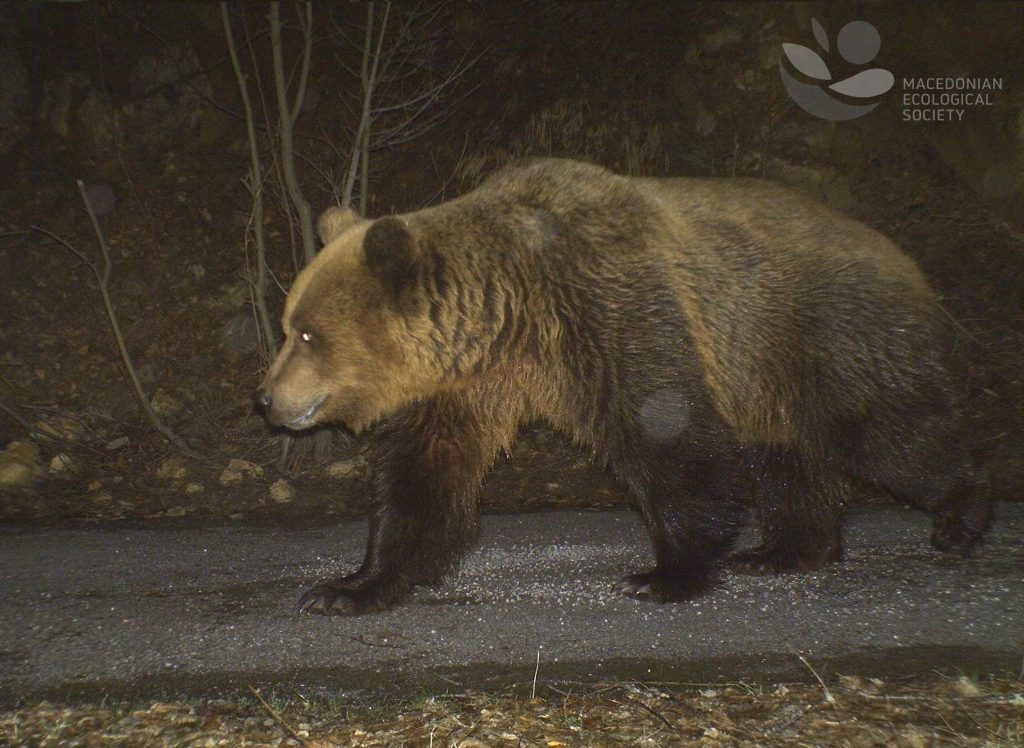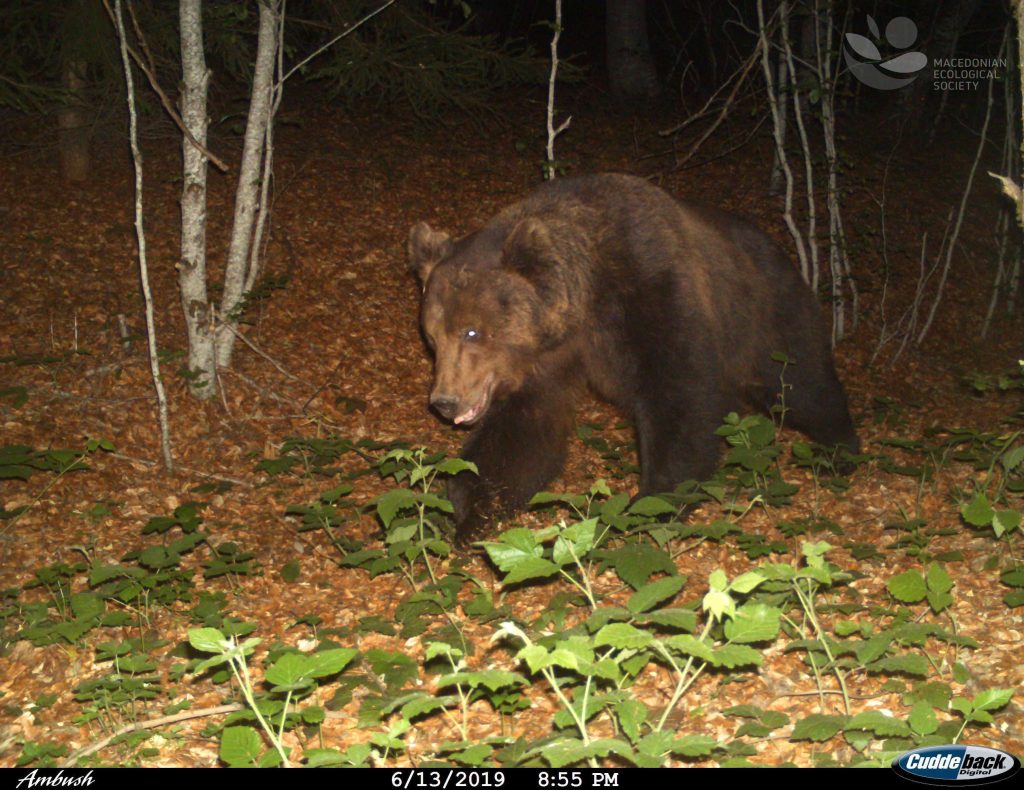 Proper conservation of large carnivores, like the brown bear, always entails a robust understanding of their ecology. The diet is one of the fundamental elements that needs to be well assessed before proposing management measures A recent scientific paper, published in the Macedonian Journal of Ecology and Environment, delves deep into this specific issue. This study stems from a two-year cross-border scientific research initiative conducted in the Prespa region in 2018 and 2019 by the large mammals’ team of the Macedonian Ecological Society (MES), in collaboration with the Society for the Protection and Preservation of Natural Environment in Albania (PPNEA) and the Society for the Protection of Prespa (SPP) from Greece.
Proper conservation of large carnivores, like the brown bear, always entails a robust understanding of their ecology. The diet is one of the fundamental elements that needs to be well assessed before proposing management measures A recent scientific paper, published in the Macedonian Journal of Ecology and Environment, delves deep into this specific issue. This study stems from a two-year cross-border scientific research initiative conducted in the Prespa region in 2018 and 2019 by the large mammals’ team of the Macedonian Ecological Society (MES), in collaboration with the Society for the Protection and Preservation of Natural Environment in Albania (PPNEA) and the Society for the Protection of Prespa (SPP) from Greece.
 The results of the study, derived from the analysis of over 550 bear scats, reveal that fruits make up the primary sustenance for bears in the Prespa region. Specifically, cherry plums were identified in nearly half of the analysed samples. The diet undergoes seasonal variation, aligning with the cyclical availability of plants. In spring, bears predominantly consume herbaceous plants and wild cherries, gradually shifting to cherry plums and cornelian cherries during the summer. Come autumn, acorns and other hardy masts, rich in fats and ideal for the pre-hibernation period, dominate their diet. On the Macedonian side, apples – which are found abundantly in the region – are principal for the bears’ autumn diet.
The results of the study, derived from the analysis of over 550 bear scats, reveal that fruits make up the primary sustenance for bears in the Prespa region. Specifically, cherry plums were identified in nearly half of the analysed samples. The diet undergoes seasonal variation, aligning with the cyclical availability of plants. In spring, bears predominantly consume herbaceous plants and wild cherries, gradually shifting to cherry plums and cornelian cherries during the summer. Come autumn, acorns and other hardy masts, rich in fats and ideal for the pre-hibernation period, dominate their diet. On the Macedonian side, apples – which are found abundantly in the region – are principal for the bears’ autumn diet.
Despite their seemingly omnivorous diet, the research unequivocally underscores that bears in the Prespa region cannot be described as avid carnivores. Remains of ungulates were found in less than 5% of the samples, with a mere 1.5% attributed to domestic livestock such as goats and sheep. One of the study’s main conclusions is that the brown bear poses no serious threat to farming activities in the region.
Comprehensive research of this nature provides insight into the entire spectrum of a bear’s diet. When food is abundant, bears tend to lean towards a more specialized diet, primarily favouring the most readily available fruits. However, when natural food resources are scarce, they are compelled to broaden their diet, adopting more pronounced generalist omnivorous tendencies. This serves as a compelling argument for increased protection and reduced exploitation of the bears’ natural habitats, with the aim of reducing bear-human conflicts.
Furthermore, the paper provides a more extensive elaboration about the dietary disparities across the three countries, as well as offering insight into habitat selection and quality, drawing connections to the trophic ecology of bears. For a more in-depth understanding, read the entire paper on the following link.



